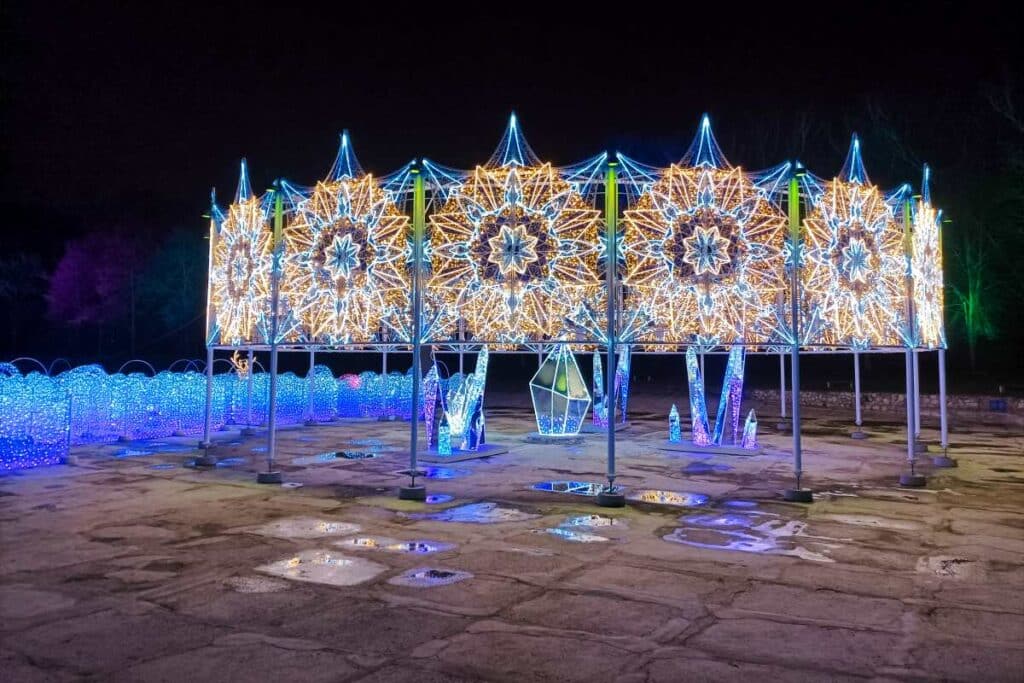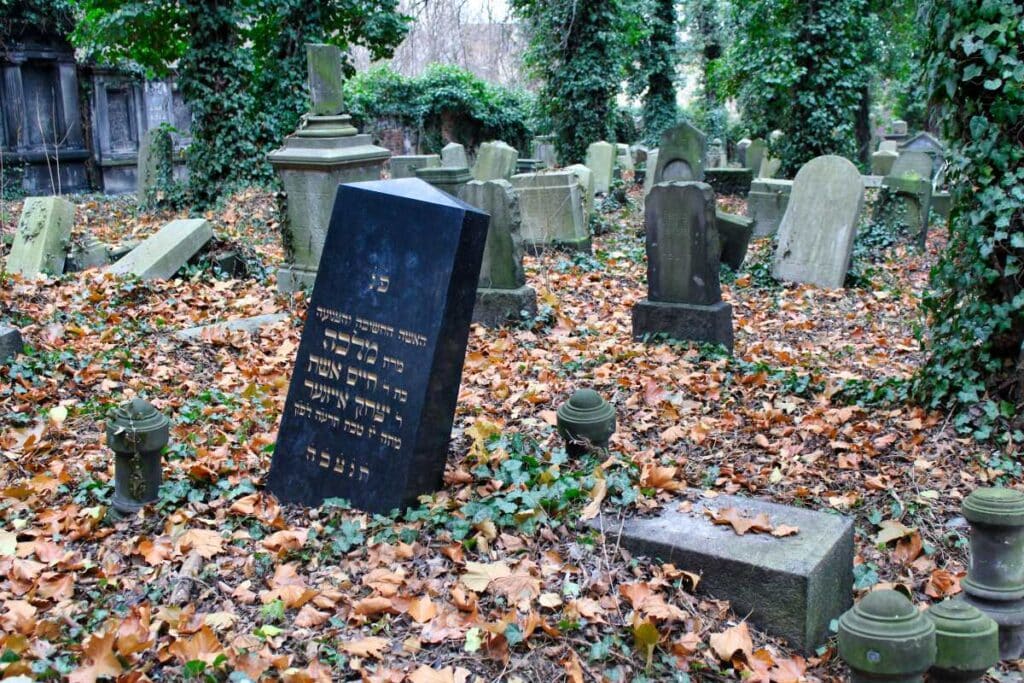Zabrze, in the heart of Silesia, is not really on the mind of many foreign tourists when it comes to the most beautiful destinations in Poland. However, the city has a lot to offer and Zabrze has shed its gray veil in recent years and has become a lively big city. There is a plenty to see and the city government is doing a lot to preserve the historical heritage of the region and to break new ground in terms of tourism. Reason enough for me to pay Zabrze a visit and show you the most beautiful Zabrze sights!
The history of Zabrze
It’s hard to believe, but Zabrze just turned 100 years old in 2022! But how does it come to that? Actually, the town is much older and, with 150,000 inhabitants, was even the largest village in Europe at the turn of the 19th and 20th centuries. Responsible for this curiosity were the citizens of Zabrze themselves, who for a long time resisted being recognized as a city for tax reasons.

The rise of Zabrze to an important mining location is closely connected with industrialization and from the 19th century numerous shafts were built here to extract coal. Initially, the coal was used for heating, but with the invention of steel, for the production of which huge amounts of coal were needed, mining intensified once again.
In 1915, the rural community was then renamed “Hindenburg O.S.” (O.S. ist the German abbreviation for Upper Silesia) in honor of the then General Field Marshal Paul von Hindenburg. After World War I, Upper Silesia was then partitioned between Poland and the German Reich after three uprisings and a referendum, with Hindenburg remaining in the Reich and receiving municipal rights in 1922.
After the Second World War, the city then became Polish and was again given the name Zabrze. With the fall of communism and the general coal crisis then occurred the decline of the city, from which it has not recovered for a long time. In recent years, however, a new spirit has taken hold in the city. People are proud of the historical heritage, take care of architectural traces of the past and have set up numerous exhibitions and worlds of experience that revolve around the heritage as a mining town.
These are the most beautiful Zabrze sights
Today Zabrze presents itself sometimes modern, sometimes just like 100 years ago and that is exactly what makes the special charm of this place and why I would like to introduce the city to you here in more detail. But enough of the preface, let’s go with the most beautiful Zabrze sights!


Mining Museum Guido
If you want to see for yourself the rich history of coal mining in Upper Silesia, there is no better place than the Kopalnia Guido Exhibition Mine. In 1855, Guido Henckel von Donnersmarck founded a coal mine here, where mining ceased after the Second World War and which was later used as an experimental mine and museum. Today, an original elevator takes you down the “Kolejowy” shaft at a breathtaking speed of 4m/second. You should hold on tight, because everything here is still as it was a few decades ago.


The vehicle whizzes 320 meters down into the darkness, then the actual guided tour of the mine begins (also available in English). Along the way, you’ll learn all about the history of mining in the region and get a very clear explanation of how the mining of the “black gold” has changed over time. By the way, you can’t do the tour alone – and that’s a good thing, because otherwise you would be hopelessly lost in the complex. In addition to a lot of historical information and a few stooped walks, a special surprise awaits you at the bottom: the deepest pub in the world, according to its own statement, which even serves a beer brewed especially for the mine!


Arena Zabrze (Ernest Pohl Stadium)
The Górnik Zabrze soccer club is cult in Poland and is still the record champion. In terms of fan base (and due to the miners’ history), it can perhaps best be compared to Schalke or Dortmund in Germany or Liverpool in the UK. We will soon publish a separate article here on the exciting past of the club where former German national Lukas Podolski plays today. The stadium, named after the Silesian footballer Ernst (Polish: Ernest) Pohl, was built in 1934 and a roofed grandstand was also built at that time especially for a visit by Hitler. However, the dictator’s reception was then held at short notice at another location in the city.

This grandstand still exists today and makes the heart of soccer romantics beat faster. However, not for much longer, because a modern stadium has been built around it and soon the stand will be demolished so that all sides of the stadium, which was rebuilt in 2016, present a modern, uniform image. Of course, to feel the unique atmosphere in the stadium, your best bet is to attend a Górnik (translated as “miner”) game. Alternatively, you can take part in a guided tour in English and even be picked up from your hotel by the team bus if you wish!
Church of St. Joseph
After leaving the stadium, I immediately noticed the neighboring church with its unusual round arched front. Upon inquiring, I learned that it was designed by Dominikus Böhm, about whom I had already read a lot in the course of my research for my Ulm and Neu-Ulm travel guide and who is definitely one of the most exciting church architects of the 20th century.
The building was erected in the Expressionist style in only one and a half years and has nothing in common with the many Baroque and Gothic churches that are usually known in Poland. Inside, there are forty windows, symbolic of the 40-day wandering of the Israelites through the desert. With its unusual design language, St. Joseph’s (Polish: Kościół św. Józefa) is definitely one of the most exciting churches in Silesia and one of the most important Zabrze sights.

Queen Luise Adit
The walk through the Guido mine was quite exhausting. It’s a good thing that there’s still the Queen Luisa Adit (Sztolnia Królowa Luiza, formerly Hauptschlüssel-Erbstollen). Here there is a drainage canal, which diverted the water from the newly created mines into a canal, which then led into the Odra River. Already around 1800 the facility was created and at that time, of course, no one thought of creating a tourist attraction of a special kind here. And that is exactly what makes the gallery so attractive.


Here you can ride on small boats through the tunnel, sometimes in complete darkness. In some places, Silesian legends are projected onto the wall in an effective manner and through the clever use of light. Then it’s on foot on metal bridges through the underground – a unique experience that will remain in my memory for a long time!
Military Technology Museum
Right next to the Queen Louise Adit, which also has a small recreational park with a beach, playground and barbecue huts, is the Military Technology Museum (Muzeum Techniki Wojskowej). On display is heavy equipment from World War II, but mainly from the time of the People’s Republic of Poland, that is, when Poland was still a socialist state. The exciting thing is that a lot of effort is made to get the old equipment running again and to make it roadworthy, so that you can see a tank “in action” at close range.

Park Miliona Świateł
Behind the beautiful name “Park of a Million Lights” hides a unique attraction that you can visit between November and February in the evening hours. Countless LED lights have been combined into unique works of art that are a real feast for the eyes, and not just for children. It glitters and sparkles everywhere, and in addition to a park landscape, a lake was also included in the concept.


Whether you stroll through the “Avenue of Lovers”, drink a mulled wine at the small Christmas market, hurtle down a ramp on a tire, or simply enjoy the unique interplay of lights and background music – you won’t want to leave!

Steel House
The idea of building a house entirely out of steel is something you simply have to come up with. In the 1920s, there was a lot of experimentation with new building forms, and what could be more obvious than to try it out with the steel produced at the Donnersmarck ironworks? They tried it at four other locations in the city, but the idea probably never caught on.
It was possible to build an entire house like this in just a few days, but it really doesn’t look comfortable, especially since the floors and ceilings were made entirely of steel and lightning often struck here. The architects had at least thought of that, the house works like a Faraday cage, so that nothing can happen here, even if residents report that their hair often stands on end when there is lightning. I wouldn’t want to live here, but the house on Ulica Cmentarna makes a great photo motif!




Jewish cemetery
Just a stone’s throw away from the Steel House is the city’s old Jewish cemetery. It was laid out in the 19th century and is unfortunately not in particularly good condition. However, this is also what makes this place so charming. It looks very enchanted and bears witness to the rich Jewish history of Zabrze. Sometimes the graves are magnificent, sometimes very simple and both German and Hebrew inscriptions adorn the tombstones. There is also a mass grave for Jews who were murdered in the Zabrze camp, a subcamp of Auschwitz-Birkenau. It is to be hoped that the money can soon be raised to restore this important place of remembrance.

Zandka Colony
From the German word “Sand” derives the name of this workers’ settlement not far from the Jewish Cemetery. The complex was built for the workers in the Donnersmarck smelter and includes several streets, with the houses in Ulica Krakusa among the most beautiful. The houses were built in the first two decades of the 20th century, but if you think away the cars and satellite dishes, nothing has changed since then and you can experience a little time travel to the height of industrialization here. Many of the brick buildings have seen better days, but that’s what makes the streets lined with plane trees so charming.

Admiralspalast
The fact that the 1920s saw the construction of many architecturally exciting buildings that stood for a dawning of a new age is not only evidenced by the Stahlhaus. The Admiralspalast at the train station is another example of the creative energy of those years and was designed by Richard Bielenberg and Josef Moser. During the construction of the building, which was planned as a hotel, a surprise occurred, because they had tried to build it exactly over a tunnel, which is why an additional reinforced concrete slab had to be inserted to prevent it from collapsing. And so the Admiralspalast still stands today and even if a certain patina has already settled over the hotel, the building still fascinates with its rounded corners and expressionistic design language.

District Office
Before Hindenburg was granted city rights, several villages were administered from the building of the District Office, built in 1875, which was located in the then Dorotheenstraße (today: Ulica 3 Maja). The beautiful building was recently restored and is now used by the Coal Mining Museum (Muzeum Górnictwa Węglowego). Unfortunately, it also has a dark past, because in communist times it was used by the UB – the Polish KGB equivalent – which also maintained a prison here in the basement. Fortunately, nothing of this has remained, and today spectacular temporary exhibitions are shown here, for which the historic premises have been modernized. You should also not miss the wonderful staircase and the hall with the stained glass windows on the second floor!

Water tower
In the past, the city was home to countless water towers. Today, a particularly beautiful specimen houses an exciting exhibition, a café and a viewing platform. The building, which was erected in 1909, has had a modern extension since 2022, and there is no other place in the city from which you can get such a good view of Zabrze and the surrounding countryside as from here. The exhibition is devoted entirely to coal, focusing on its physical and chemical properties. From a height of more than 40 meters, you can see how surprisingly green Zabrze is, and if the visibility is good, you can see as far as the Beskid mountains. In the café you can round off your visit to the latest Zabrze sights with delicious cakes and pies!

Zabrze Restaurants
You got hungry after visiting the many Zabrze sights? No problem, here are some Zabrze restaurant tips for you, because the city also has a lot to offer in terms of cuisine! And if you’re not sure what to eat, check out our article on the most delicious Polish dishes!
- Szyb Maciej, ul. Srebrna 6.In the superstructure of the old coal shaft “Concordia” moved a chic restaurant with bistro, where you can try delicious classics of Silesian cuisine. The restaurant, which has won several awards, even has its own water source of the highest quality. You can also take a guided tour of the old winding tower and enjoy the view over the city.
- U Kelnerów, plac Warszawski 5. “At the waiters” is the name of this restaurant, because here the graduates of a waiters and cooking school have joined forces to open a restaurant. In a modern ambience and with very friendly service, you can get delicious pizzas, pasta and Polish dishes with a modern twist, and the presentation of the food is a real highlight.
- Valdi Classic, ul. Jerzego Wyciska 1. In a beautiful building from the early 20th century, Polish classics are served in a dignified ambience at the highest level. You can even spend the night in the villa, there are some rooms for rent.
How did you like my article about the most beautiful Zabrze sights? Feel free to leave a comment! #visitpoland #polentravel

